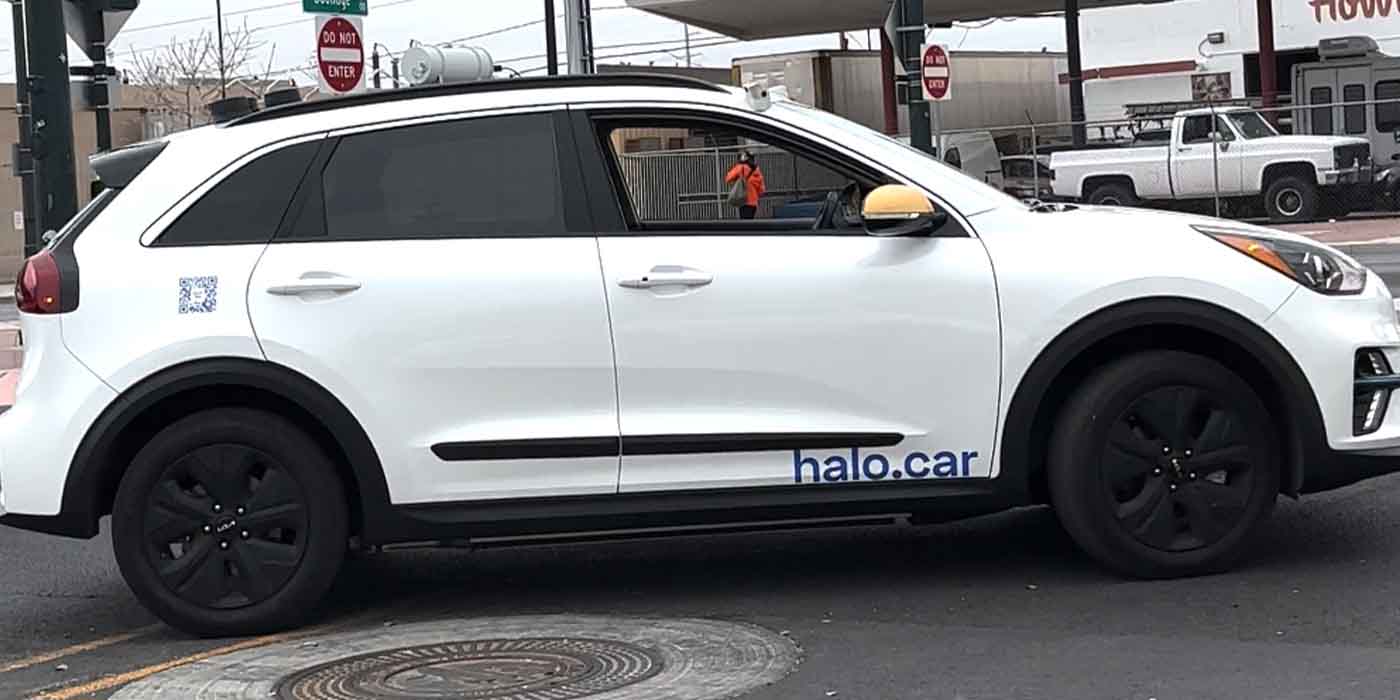
During my time at CES in Las Vegas, I got the chance to visit the local HQ of Halo.Car – an EV mobility solutions provider that specializes in rental cars that are dropped off and picked up using remote pilots. Company founder and CEO Anand Nandakumar personally showed me around and explained how Halo.Car’s remote piloted technology looks to bridge the gap between car sharing, autonomous driving, and quicker EV adoption.
Halo.Car is a relatively young startup focused on much of the same segments or nascent technologies that others are, but is approaching them with a different solution. Rather than develop yet another carshare program that requires designated parking areas or customers to pick up and return their rented vehicle somewhere, Halo.Car will drop off and pick up the vehicle wherever you are.
Since viable autonomous driving technology continues to perpetually feel two years away (10 if you ask the Halo.Car team), the company has adopted a different strategy that uses remote drivers at its HQ who are authorized to operate the vehicles using video and sensor data streamed from proprietary software and hardware retrofitted onto the company’s fleet of Kia Niro EVs.
This process will eventually enable a remote pilot to drive your rental car to you in Las Vegas and unlock it allowing you to enter, take over control, and drive away. You can then rent the EV for an hour, a day, or weeks at a time. Simply decide when you’re done, exit the vehicle and it will drive off.
This process is partially underway in the streets of Vegas, but with several failsafes in place to ensure the safety of everyone inside and outside of a given Halo.Car EV. Nandakumar walked me through Halo.Car’s four phases to reach the future of mobility:
- Deliveries of the car, manual driver inside the vehicle
- Deliveries of the car by a remote pilot, with a safety driver inside
- Deliveries of the car remotely with no one inside, with a chase car
- Deliveries of the car all via remote pilot
Nandakumar elaborated and shared his insight during this chat and throughout the whole experience:
We see the four-step process being important to launching the first city while gaining considerable learnings from it. It’s an act of balancing risk management with speed and revenue.
After that, we went out for a ride of our own as you’ll see below.
Watch a Halo.Car EV pick us up and pilot us back to HQ
As previously mentioned, Halo.Car fully intends to one day deliver remotely piloted EVs to customers, but in order to remain safe to start, there were a couple failsafes in place. For instance, we had a chase car behind us with a human driver, and a passenger in their front seat holding a kill switch for our EV in case anything went wrong (it didn’t).
Secondly, we had a human in the driver’s seat of our remotely operated Kia Niro, who was simply there to step in if needed. As you’ll see in the videos below, that was not the case for our visit, but Halo.Car hasn’t been operating on roads in Las Vegas too long, so it’s understandable that they are making passenger and pedestrian safety the number-one priority.
To begin, we rode in the chase car and watched a separate EV depart from Halo.Car HQ without anyone present in the vehicle. I’m sure one day we will all become accustomed to this sight, but it’s still pretty surreal to not see a driver, at least for myself.
After driving a few blocks, both EVs pulled over so Nandakumar and I could hop into the “dropped-off” Kia Niro. In a typical Halo.Car exchange, this would be when the customer takes over and drives the EV like a normal rental, but to experience Halo.Car’s sensory technology and remote piloting up-close, we sat in the car and watched while the remote driver took over, simulating the end of a rental, and return to HQ. Here’s some footage of that drive back.
After our trip, Nandakumar walked me through the back shop of Halo.Car HQ to show me the next EVs being retrofitted with the company’s technology. I couldn’t take any photos, but was quite impressed at how small of a footprint Halo.Car’s tech took up in the trunk. Better still, Nandakumar told me the next generation of technology will be even smaller.
Another interesting fact I learned was how simple it can be to restore the original EV back to stock by removing Halo.Car’s technology. The CEO explained that it can remove any evidence of piloting driving tech and resell the EV used without issue. That could come in handy as the company looks to eventually swap out EVs and implement additional models into its fleet – some smaller, some larger.
The current Halo.Car fleet is about 15 Kia Niro EVs, but the company is already planning to ramp up, dspecially now that its carshare service is up and running in Las Vegas. If you happen to be in Las Vegas, you can test out Halo.Car yourself by booking your appointment here.
FTC: We use income earning auto affiliate links. More.
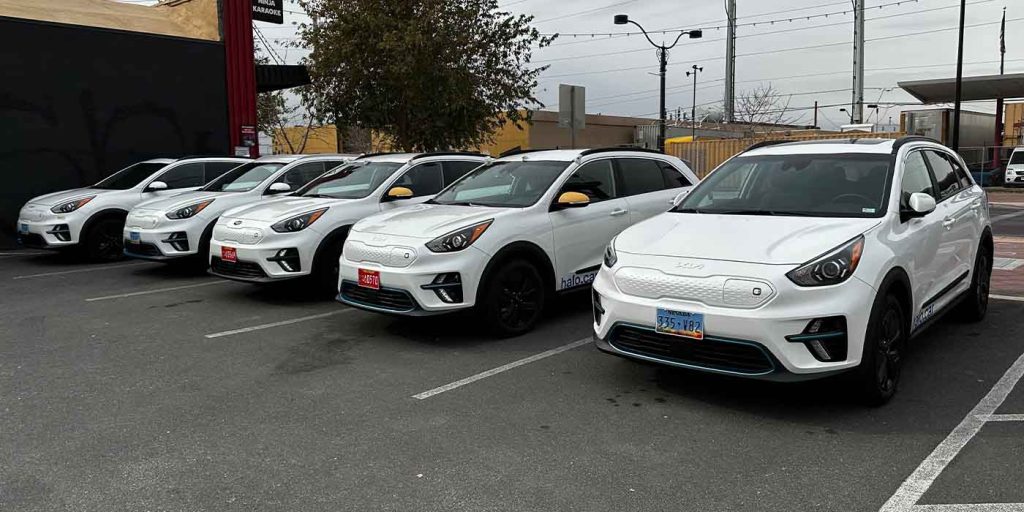
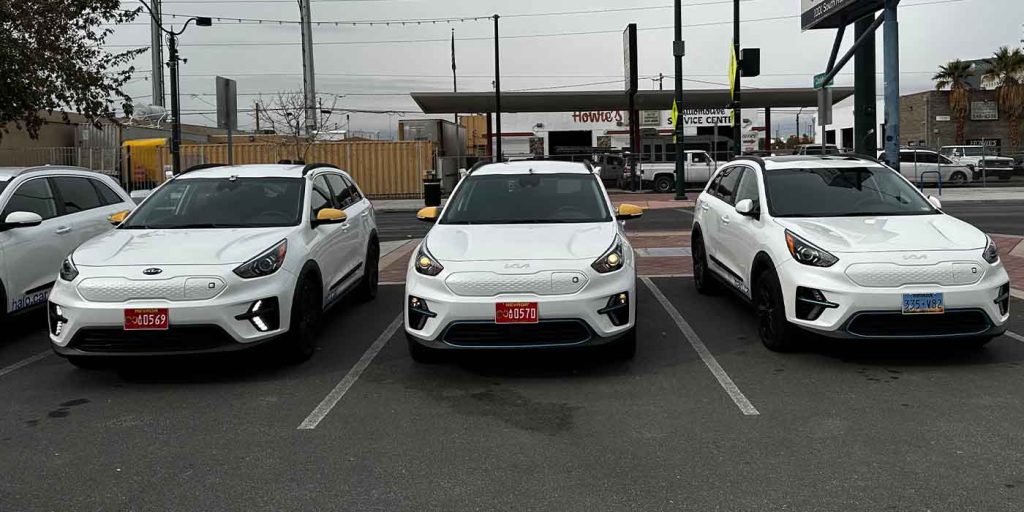
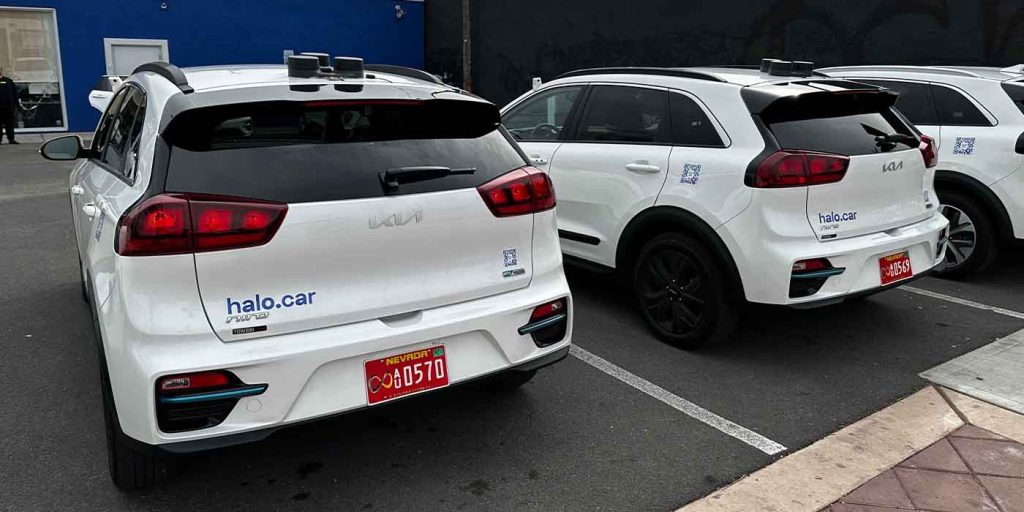
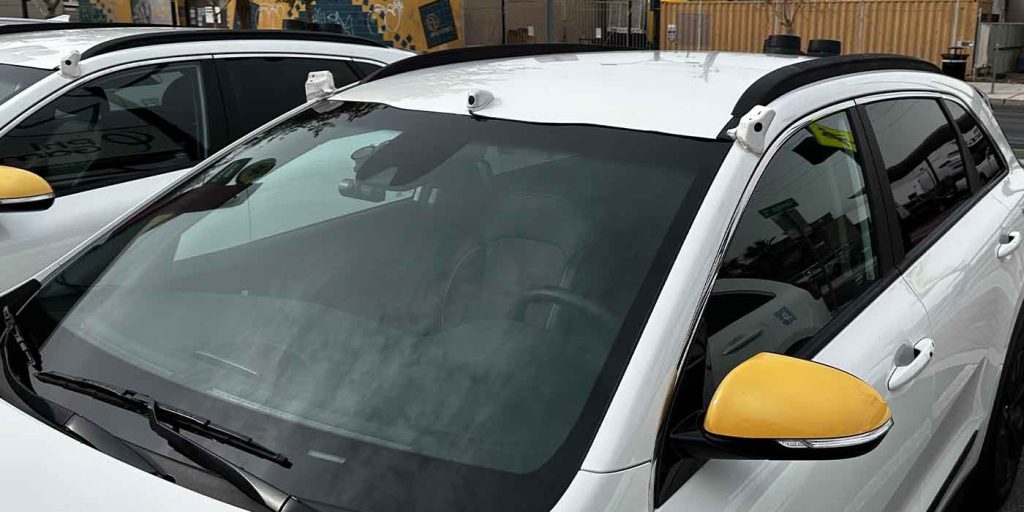



Comments